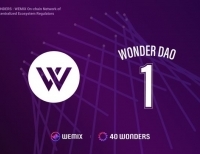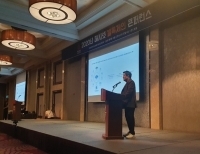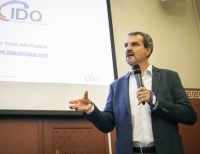Masimo (NASDAQ: MASI) announced today the findings of a study recently published in BMC Anesthesiology in which researchers at University Hospital Linköping, Sweden, compared the performance of goal-directed fluid therapy (GDFT) using invasive esophageal Doppler to GDFT using Masimo PVi® (pleth variability index, measured noninvasively and continuously using SET® pulse oximetry sensors) in patients undergoing major abdominal surgery.[1]
Noting the value of GDFT in aiming to determine “the optimal amount of fluid for an individual patient,” Dr. Hans Bahlmann and colleagues sought to compare the effects of two methods of GDFT, stroke volume optimization guided by invasive esophageal Doppler (control group) and fluid optimization guided by noninvasive PVi (intervention group), on patients who were scheduled for open abdominal surgery lasting two or more hours. The effects compared were incidence of complications and length of hospital stay.
The researchers collected data from 146 patients who had surgery between November 2011 and January 2015, who were randomly divided into the two groups. In the intervention group, PVi was noninvasively and continuously measured with a Masimo Radical-7® Pulse CO-Oximeter® with software version 7.8.0.1 and SET® sensors. After an initial fluid bolus (given to all patients irrespective of PVi value), a fluid bolus was given if PVi was ≥ 10%, repeated at 5 minute intervals until PVi fell below 10% or did not decrease at all. In the control group, esophageal Doppler measurements were performed using a Deltex Medical CardioQ apparatus. After an initial fluid bolus, Doppler measurement was performed after 5 minutes and fluid boluses were repeated until stroke volume did not increase by 10%, in accordance with published protocols.
Observers blinded to each patient’s group assessed complications for 30 postoperative days using a pre-specified list of complications, as well as length of hospital stay. The researchers found that noninvasive PVi and invasive Doppler performed with no statistical difference, with similar incidences of complications and lengths of stay between the two groups. In the intervention/PVi group, there were 64 complications (corresponding to 51% of patients), with a median length of stay of 8.0 days (interquartile range [IQR] 8.0 days). In the control/Doppler group, there were 70 complications (corresponding to 49% of patients), with a median length of stay of 8.0 days (IQR 9.5).

The researchers concluded, “No difference in clinical outcome, as defined by number of postoperative complications, and length of hospital stay, was found when goal-directed fluid therapy was applied using PVi as an alternative to esophageal Doppler. PVi appears to be an acceptable alternative to esophageal Doppler for goal-directed fluid therapy during major open abdominal surgery.”
In discussing other PVi-related clinical studies, the researchers also noted that “Based on these reports and our findings, a clinician wishing to pursue GDFT can choose PVi over esophageal Doppler in the large majority of patients undergoing major open abdominal surgery. PVi, in contrast to esophageal Doppler, is not sensitive to interference from diathermy and does not require frequent access to the patient’s head for probe repositioning. Also, PVi can be measured without single-use equipment, avoiding the cost for single-use esophageal probes (USD 130 in our setting). However, as illustrated by the request for Doppler data in two PVi patients, the clinician might still want to have access to a reliable method for measuring intraoperative cardiac output to increase the amount of hemodynamic information during unusually complex situations or in cases of known vascular and/or myocardial dysfunction.”
As a study limitation, the researchers noted the absence of a control group with neither PVi nor Doppler guiding fluid therapy, and therefore “it is not possible to tell whether PVi and Doppler both result in similar improvements in outcome, or whether neither method improves outcome when compared to treatment without GDFT.” They also noted that because of determining sample size using a 10% difference in the number of complications at 30 days, “the study was not powered to detect smaller albeit still significant differences in postoperative outcome.”
PVi has not been cleared by the FDA to assess fluid responsiveness.

 다스아카데미 X 유즈페이 50,000포인트 지급 이벤트 진행
다스아카데미 X 유즈페이 50,000포인트 지급 이벤트 진행
 위믹스3.0 최초의 DAO ‘원더다오’, 노드 카운슬 파트너 합류
위믹스3.0 최초의 DAO ‘원더다오’, 노드 카운슬 파트너 합류
 한국블록체인협회, FATF 가이드라인 준수 및 객관적, 중립적 기술표준 수립을 위해 트래블 룰 적용 대상인 모든 회원사의 참여와 협력 논의해 나갈 것
한국블록체인협회, FATF 가이드라인 준수 및 객관적, 중립적 기술표준 수립을 위해 트래블 룰 적용 대상인 모든 회원사의 참여와 협력 논의해 나갈 것
 [Weekly 기획+](블록체인 패권) 글로벌 IT기업, 블록체인 본격화...韓-中-美 삼국지 펼쳐지나
[Weekly 기획+](블록체인 패권) 글로벌 IT기업, 블록체인 본격화...韓-中-美 삼국지 펼쳐지나
 온더, 심준식 대표 신규 선임
온더, 심준식 대표 신규 선임
 미디움, 2020년 해시넷 블록체인 컨퍼런스 주제 발표.. "패브릭의 성능한계를 극복하다"
미디움, 2020년 해시넷 블록체인 컨퍼런스 주제 발표.. "패브릭의 성능한계를 극복하다"
 [동영상 인터뷰+] 블록패치 글로벌 비즈니스 담당 콘라드 "블록체인 기술 적용할 수 있는 산업 발굴에 주력해야 할 것"
[동영상 인터뷰+] 블록패치 글로벌 비즈니스 담당 콘라드 "블록체인 기술 적용할 수 있는 산업 발굴에 주력해야 할 것"
 SK텔레콤, 유럽·미국 양자암호통신 사업 수주… 글로벌 대표 5G 보안기업으로 우뚝
SK텔레콤, 유럽·미국 양자암호통신 사업 수주… 글로벌 대표 5G 보안기업으로 우뚝






